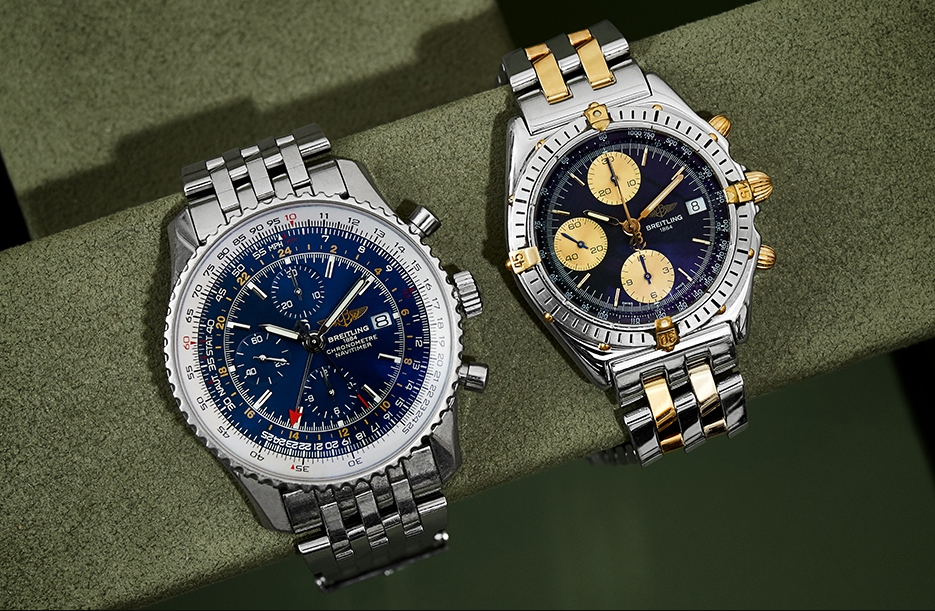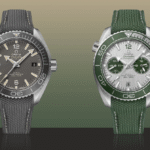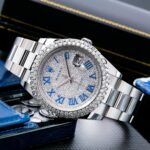When it comes to selecting the perfect wristwatch, there are many factors to consider: style, brand, complications, and most certainly, the fit. Among the most crucial yet often overlooked measurements is a watchs thickness, or as it’s more commonly referred to, its “height.” While the diameter of a watch case typically steals the spotlight in most watch-related discussions, its the thickness that plays a pivotal role in how comfortable a watch feels on your wrist. This subtle but important dimension can often be the difference between a watches that fits like a glove and one that feels bulky or cumbersome.
In this article, we delve into the significance of watch thickness, the factors that influence it, and how it impacts the overall wearability of a watches. From classic dress watches that slip effortlessly under a cuff, to robust dive watches that need extra space for functionality, the thickness of a watch can often be the determining factor in how well it suits your personal style and comfort preferences. But, like with all aspects of horology, the most important element in determining the ideal watch thickness is the size and shape of your wrist.
The thickness, or height, of a watch refers to how tall the watch is when viewed from the side. This measurement is as crucial as the case diameter when it comes to determining how a watch will sit on your wrist. It affects not only the aesthetics of the piece but also its practical usability. A thicker watch can feel more substantial, while a thinner one can provide a more understated, elegant appearance.
When shopping for a swiss replica watches, it’s easy to get caught up in case diameter, especially when it comes to popular models from iconic brands like Rolex, Omega, or Patek Philippe. However, thickness is equally important, and in some cases, it may even outweigh the importance of diameter. A watch that is too thick may dig into your wrist, cause discomfort, or just feel too “big” for daily wear. On the other hand, a watch thats too thin may lack the boldness or presence you desire, leaving you with a watches that feels too light or delicate.
For example, while the Rolex Datejust is a perfect blend of elegance and practicality, many people overlook how its thickness contributes to its overall comfort and fit. Its not the largest watch in terms of diameter, but its carefully designed proportions make it a favorite for many watch enthusiasts. On the other hand, the robust Rolex Deepsea, with its thick profile and depth-tested construction, is a far more substantial piece, designed for those who can appreciate a more commanding wrist presence.
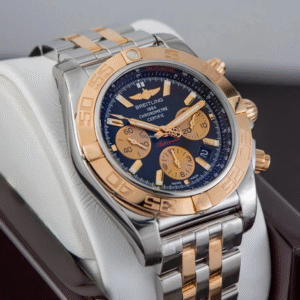
The thickness of a watch case is influenced by a number of factors, including the materials used, the movement inside, and the design of the watch itself. A thin watch, often seen in dress models, requires a more delicate and refined design, with movements that are slim and compact. For instance, the ultra-thin movements found in watches like the Jaeger-LeCoultre Master Ultra Thin or the Patek Philippe Calatrava are designed to offer a sleek profile without compromising on mechanical precision.
In contrast, professional tool watches, such as dive watches or chronographs, tend to be thicker due to their design requirements. These watches are built with more robust features, such as larger bezels, reinforced cases, and thicker crystals, all of which contribute to an increase in thickness. Take, for example, the Rolex Sea-Dweller or the Omega Seamaster Planet Ocean; these watches need extra room to house their water-resistant features, helium escape valves, and other complications designed to withstand the demands of deep-sea exploration.
The bezel is often one of the most significant contributors to a watch’s overall thickness. On professional dive watches, the bezel needs to be tall and prominent to provide a solid grip for adjusting during underwater operations, where precise timing is crucial. This design feature contributes to the “height” of the watch, giving it the presence and usability required for extreme environments.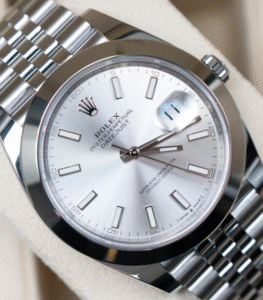
While the design and intended purpose of the watch dictate its thickness, one of the most critical factors in determining whether a watch will work for you is your wrist size and shape. A thick watch may be perfect for someone with a larger wrist, offering a balanced and proportional appearance. However, for someone with a smaller wrist, a thick watch may feel overwhelming or uncomfortable, especially if it causes the watch to protrude too much from the wrist or restricts wrist movement.
The size and shape of your wrist will influence not just how thick a watch feels, but also how it wears. Watches with a thin profile tend to suit people with smaller wrists better, as they dont dominate the wrist and fit under cuffs more easily. Conversely, larger watches, including those with thicker cases, tend to be more comfortable on those with wider or more muscular wrists, as the watch sits more naturally on the wrist without feeling too tight or constrained.
However, thickness alone is not the determining factor for comfort. Case shape, lug design, and the way a watchs profile interacts with the wrist also play significant roles. A watch with curved lugs that contour to the wrist can make even a thicker watches feel more comfortable and ergonomic, while sharp, angular lugs may cause discomfort, regardless of the watchs thickness.
When it comes to dress watches, thinness is often a key attribute that makes the piece elegant and refined. A thinner watch is not only more comfortable for daily wear, but it can also slide easily under a shirt cuff, giving it a sleek and sophisticated appearance. For those who prefer a minimalist or traditional style, the thin profile of a dress watch often enhances its elegance, making it perfect for formal occasions.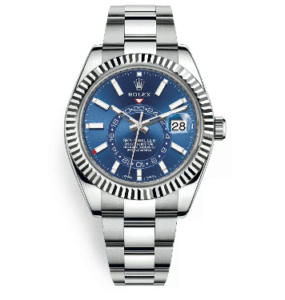
The Patek Philippe Calatrava is a prime example of this. Known for its classic, clean design, the Calatrava is one of the most iconic dress watches in the world. Its thin profile allows it to slip under a shirt cuff seamlessly, without compromising on its aesthetic appeal. Likewise, the Jaeger-LeCoultre Reverso, though slightly thicker due to its unique flip design, remains a highly respected example of a dress watch with a relatively modest thickness that ensures it can still slide easily under a cuff.
Thin watches can also be easier to wear throughout the day, as they don’t add bulk or weight to the wrist. They allow for more freedom of movement, making them ideal for professionals who prefer a watches that remains unobtrusive yet stylish.
While thinness is ideal for dress watches, the opposite is true for professional or tool watches. These watchess, often designed for specific functions like diving, aviation, or racing, benefit from being thicker due to the additional features and materials required to ensure their durability and functionality.
Take the Rolex Submariner as a case in point. Known for its iconic design and exceptional water resistance, the Submariners thickness allows it to house a robust movement and various protective features, including a thicker sapphire crystal, a helium escape valve, and a solid steel case. Similarly, the Omega Speedmaster Professional, the official watch of NASAs Apollo missions, requires a substantial build to ensure its accuracy and reliability under extreme conditions.
For diving enthusiasts, a thicker watch can provide added security, particularly when it comes to water resistance. Watches like the Omega Seamaster Planet Ocean, with its thick stainless steel case and high-quality movement, are designed to withstand high-pressure environments while offering superior legibility and functionality. The added thickness in these watches contributes to their robustness and ensures that they can perform under extreme conditions, making them ideal for those who demand the highest level of performance.
When it comes to choosing the right thickness for your fake watch, theres no one-size-fits-all answer. The ideal thickness depends on your wrist size, the type of watch you prefer, and the purpose for which you intend to wear it. Here are a few tips to help you find the perfect fit:
1. Consider Your Wrist Size: If you have a smaller wrist, you may want to opt for a thinner watch to avoid overwhelming your arm. Conversely, if you have a larger wrist, a thicker watch might complement your wrist size better and provide a balanced appearance.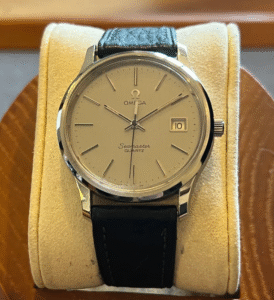
2. Think About Purpose: If you need a watch for everyday wear or formal occasions, a thin dress watch might be the best choice. For active lifestyles or professional use, such as diving or sports, you may prefer a thicker, more robust tool watch.
3. Try It On: One of the best ways to determine if a watch’s thickness is right for you is simply to try it on. Visit a store or try on different models to get a feel for how different thicknesses sit on your wrist. Pay attention to how the watch feels when worn for an extended period.
4. Remember Proportions: Thickness should always be considered alongside case diameter. Watches with thicker profiles often have a larger case diameter, but its important to find a balance between both measurements for the most comfortable fit.
Ultimately, the thickness of a watch is not just a matter of aesthetics; its about comfort, fit, and usability. Whether youre looking for a slim dress watch to complement your formal attire or a robust dive watch that can withstand the harshest conditions, thickness plays a pivotal role in the overall experience of wearing the watches.
